Abstract
In 1991 the Forty-fourth World Health Assembly declared the goal of eradicating dracunculiasis (guinea worm disease) by the end of 1995. This article summarizes the recommended strategies for surveillance and interventions in national dracunculiasis eradication programmes. It is based on personal experience with dracunculiasis programmes in Ghana, Nigeria and Pakistan. Three phases are described: establishment of a national programme office and conduct of a baseline survey; implementation of interventions; and case containment. The relevance of dracunculiasis eradication activities to strengthening of primary health care in the three countries is discussed briefly. Similar strategies would help eradicate this disease in the remaining endemic countries.
Full text
PDF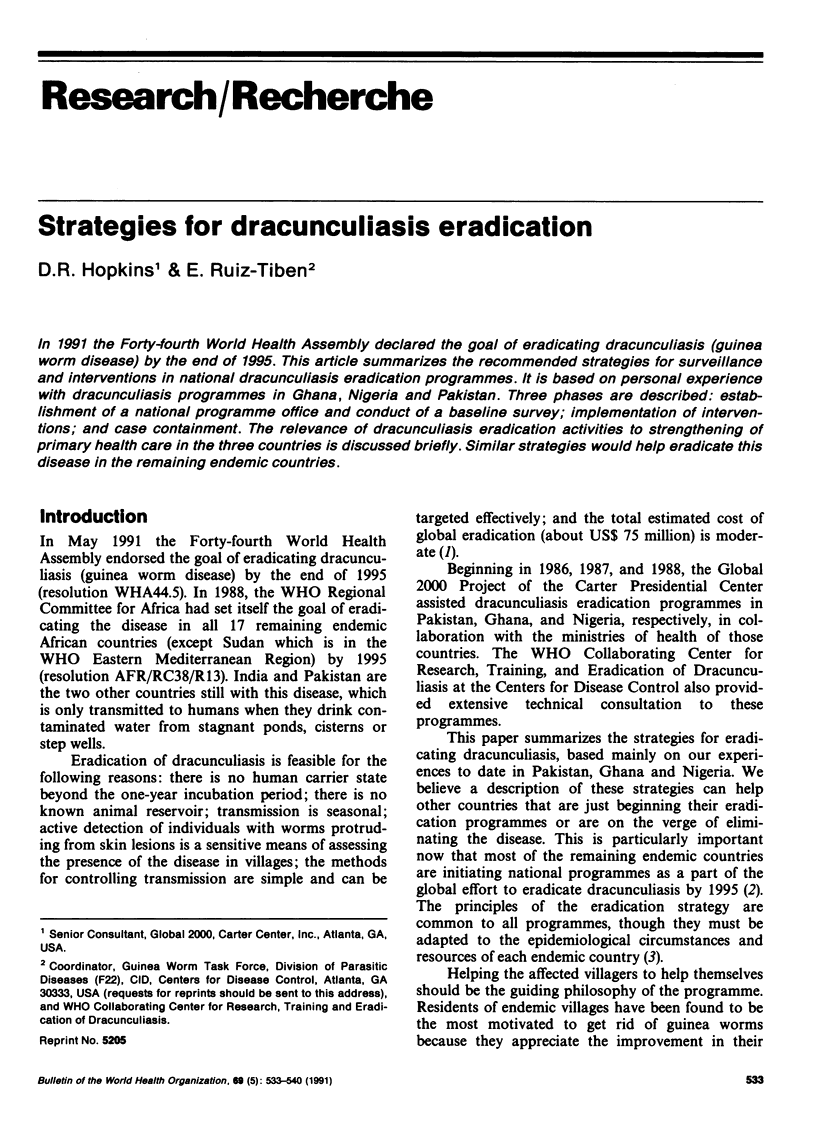
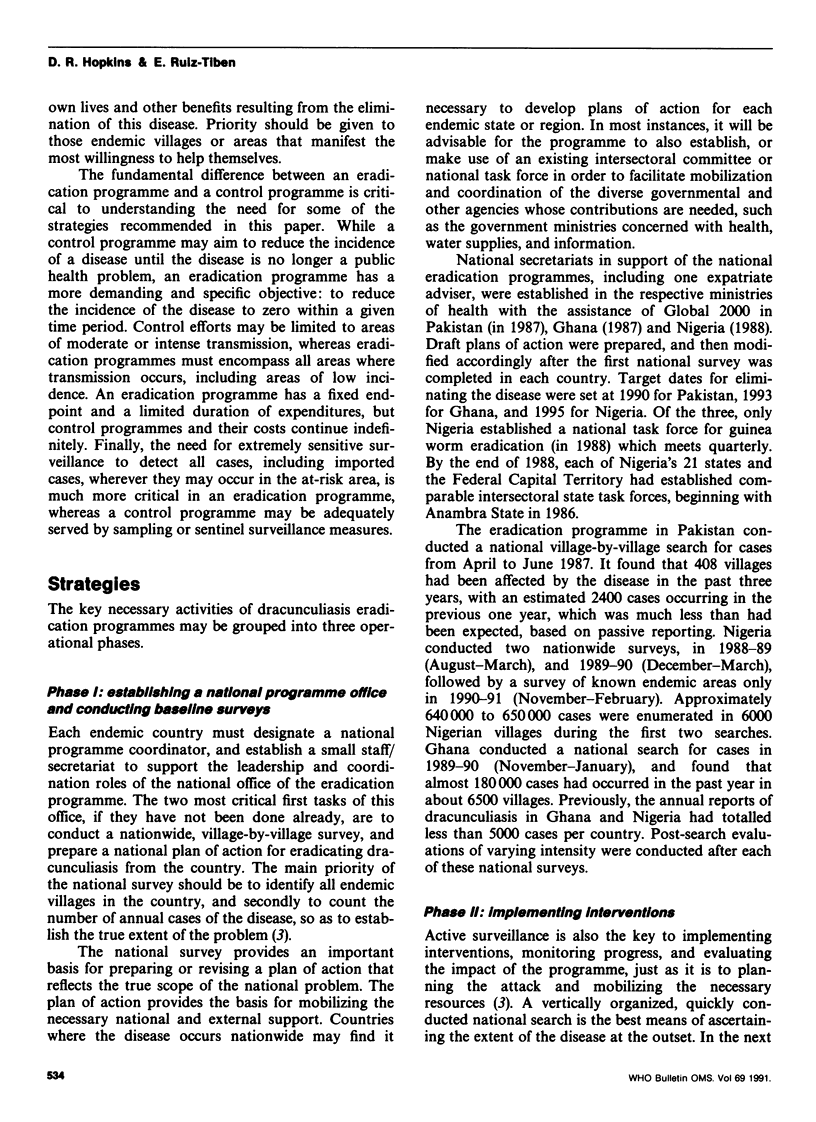
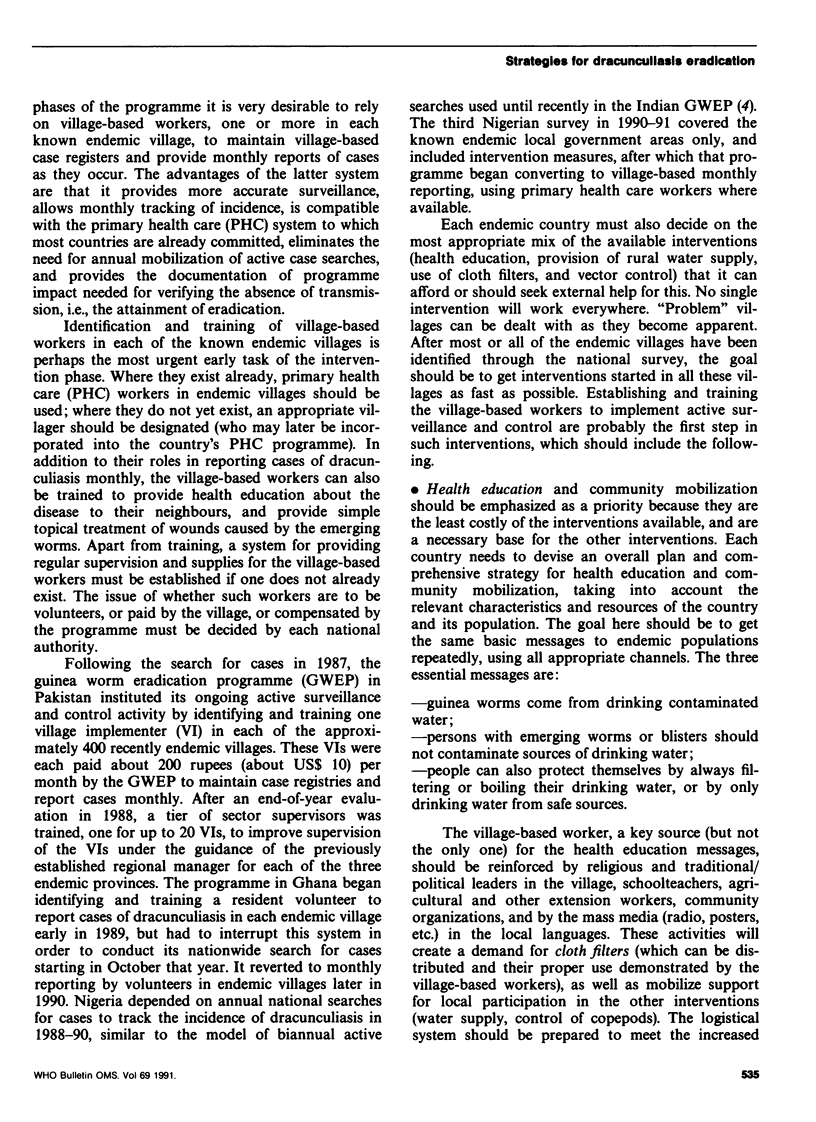
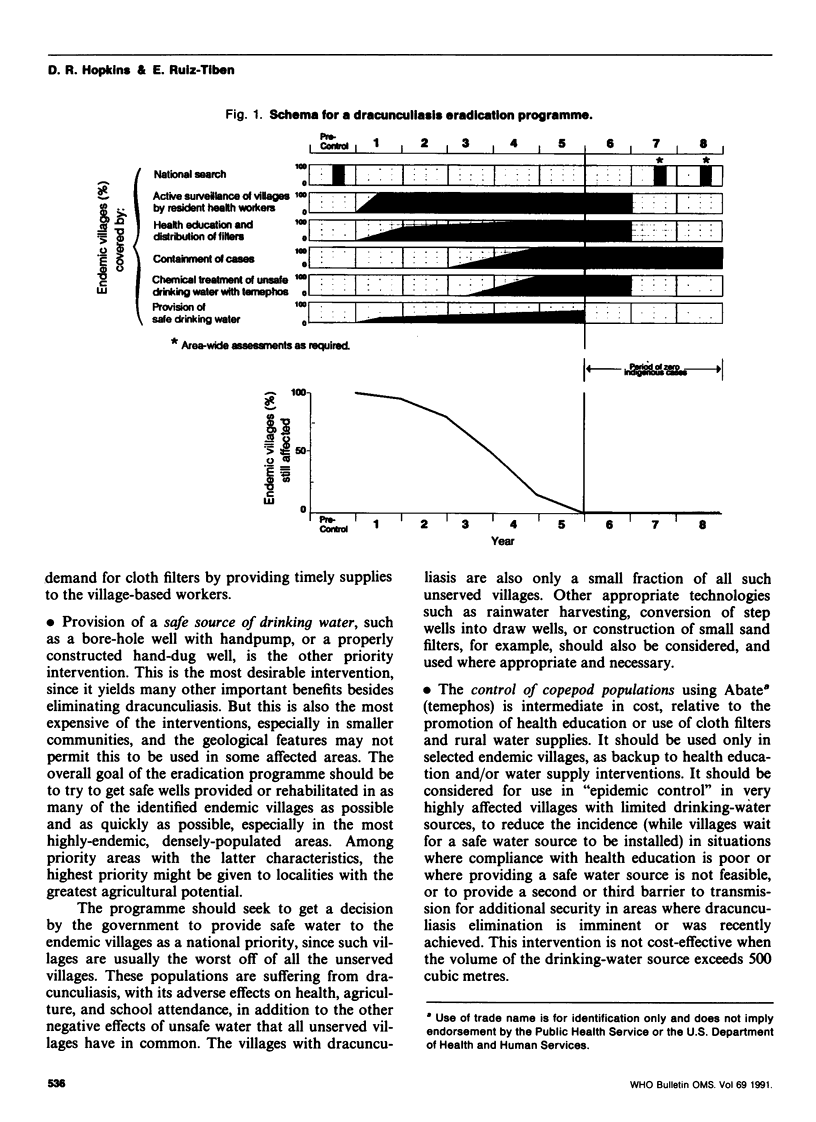
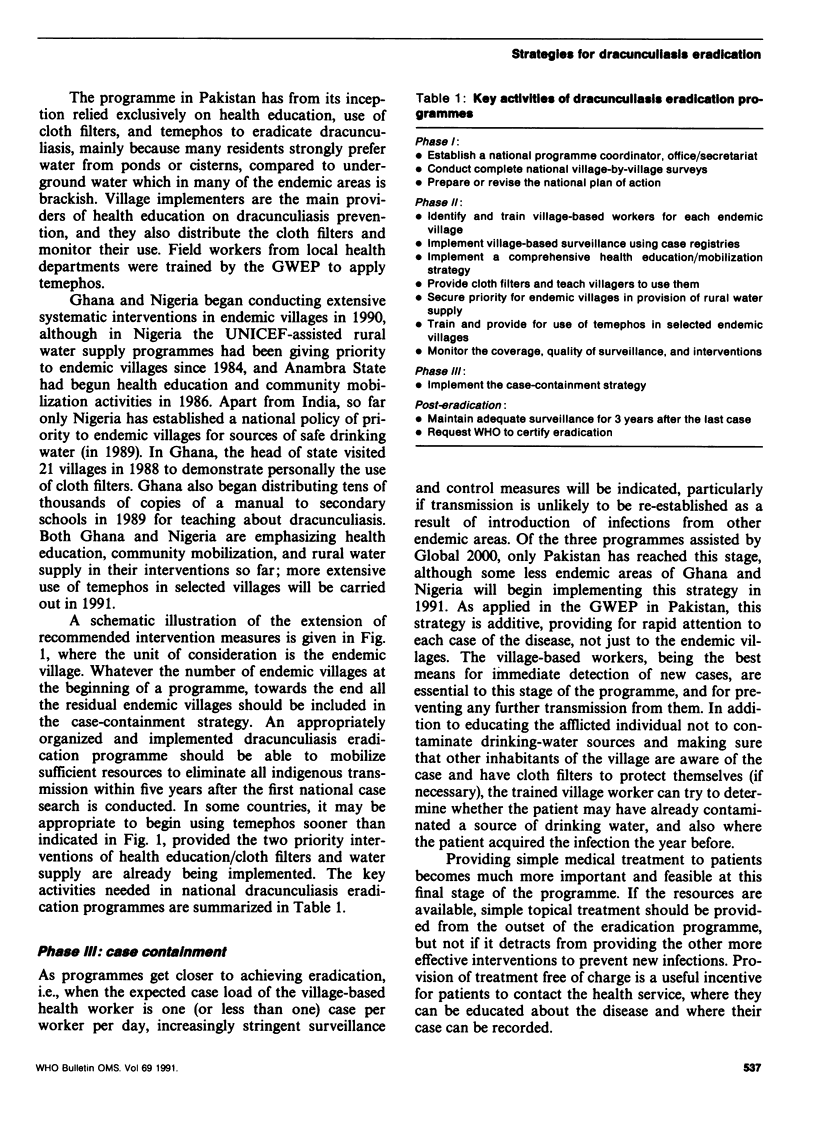
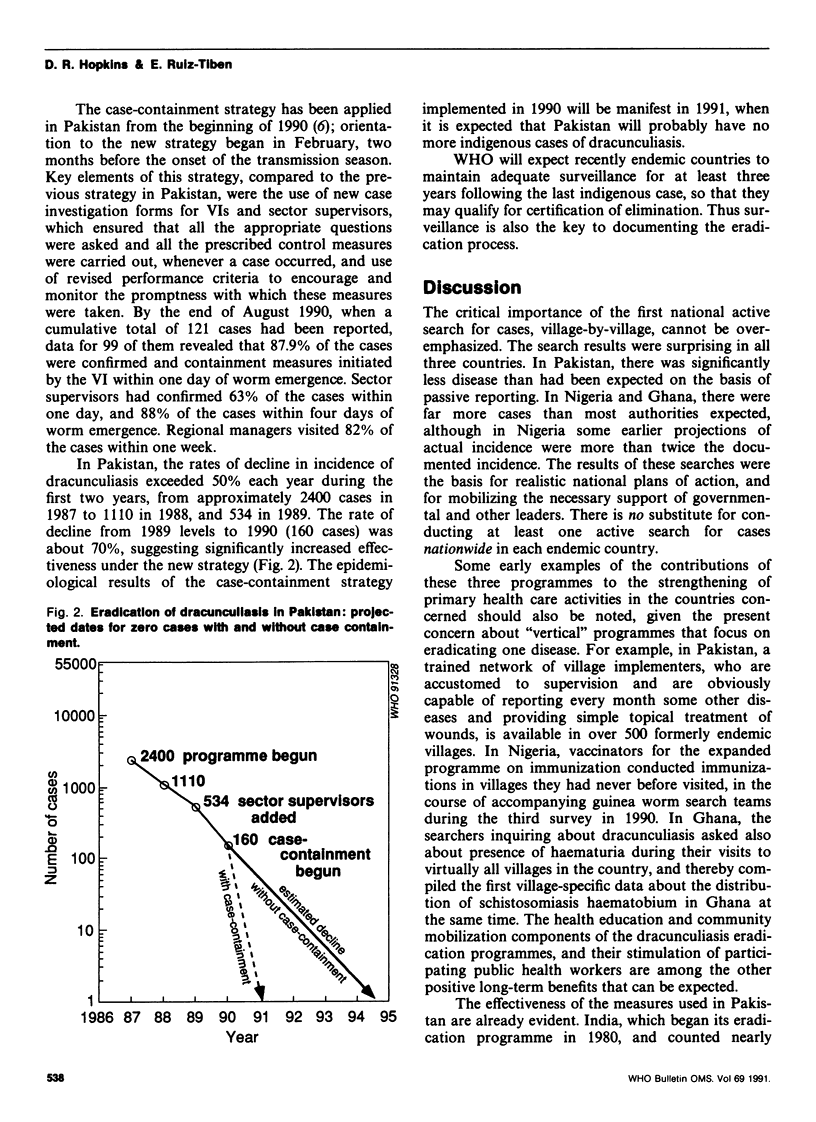
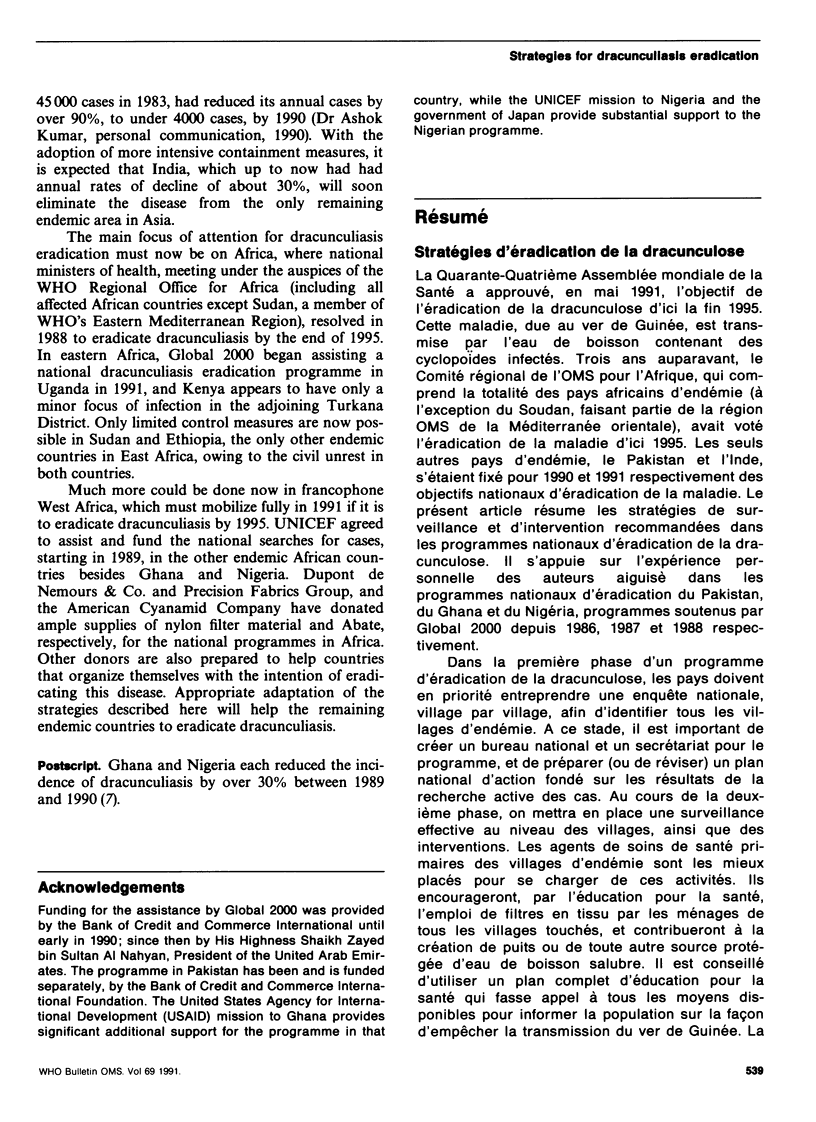
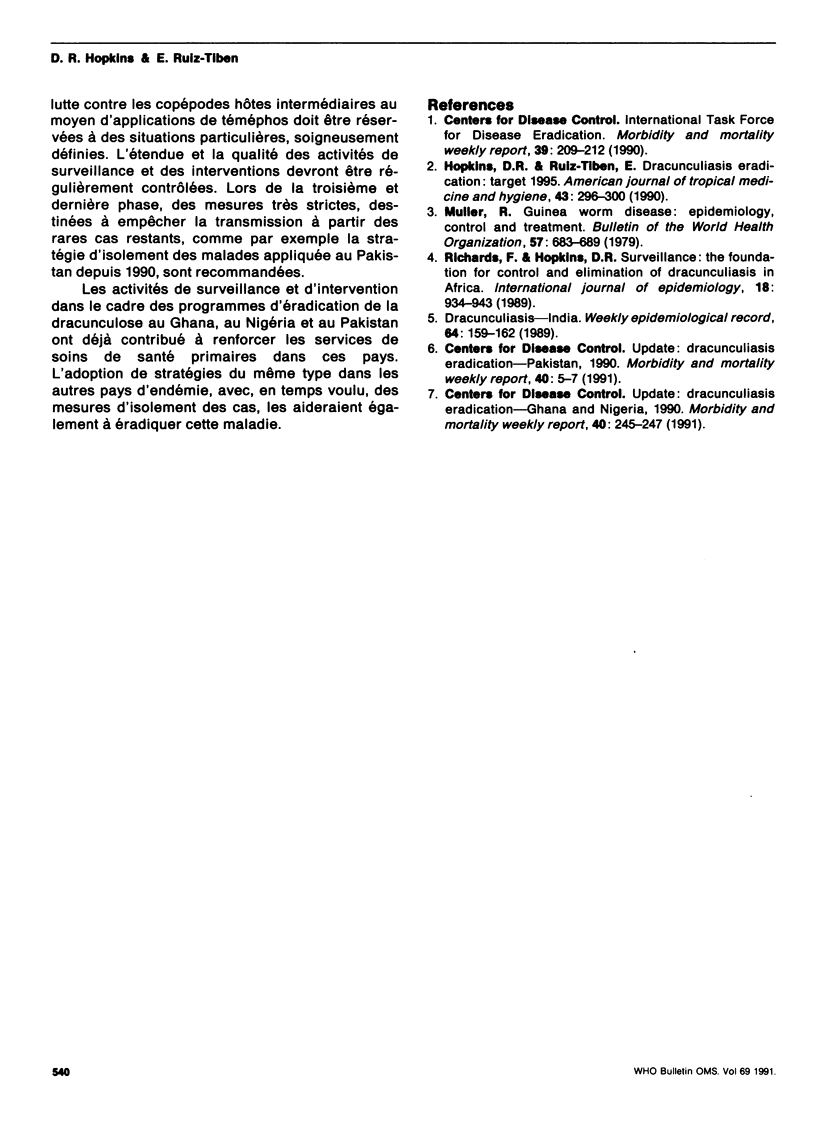
Selected References
These references are in PubMed. This may not be the complete list of references from this article.
- Centers for Disease Control (CDC) Update: dracunculiasis eradication--Ghana and Nigeria, 1990. MMWR Morb Mortal Wkly Rep. 1991 Apr 19;40(15):245–247. [PubMed] [Google Scholar]
- Hopkins D. R., Ruiz-Tiben E. Dracunculiasis eradication: target 1995. Am J Trop Med Hyg. 1990 Sep;43(3):296–300. doi: 10.4269/ajtmh.1990.43.296. [DOI] [PubMed] [Google Scholar]
- Muller R. Guinea worm disease: epidemiology, control, and treatment. Bull World Health Organ. 1979;57(5):683–689. [PMC free article] [PubMed] [Google Scholar]
- Richards F., Hopkins D. Surveillance: the foundation for control and elimination of dracunculiasis in Africa. Int J Epidemiol. 1989 Dec;18(4):934–943. doi: 10.1093/ije/18.4.934. [DOI] [PubMed] [Google Scholar]


